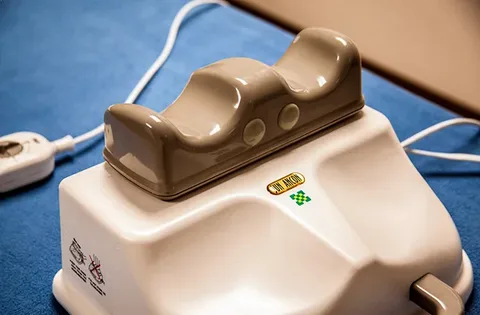Good laboratory practices (GLP) are standards and requirements that companies and scientists should follow to ensure reproducibility and reliability in experimental data. GLP bioanalysis incorporates the procedures and principles governing the design and conduct of experiments and their documentation and reports. To define good laboratory practices for GLP labs, GLP bioanalysis refers to a module of regulations for planning, conducting, monitoring, and reporting safety and non-clinical studies. Adherence to GLP regulation ensures that GLP labs submitting safety and non-clinical data for regulatory approval take strict measures of reliability, validity, and integrity in their systems.
GLP compliance is critical in multiple workflows. However, they are not necessary for every non-clinical experiment. Understanding the need for GLP and non-GLP studies helps researchers make informed decisions for research purposes.
GLP bioanalysis
The primary goal of GLP guidelines is to ensure the generated data from non-clinical and safety studies are accurate, reproducible, reliable, and traceable. GLP principles apply to personnel, facilities, methodologies, reporting, equipment, and data management. GLP bioanalysis is based on principles and systems for maintaining reliability, including:
- Standard operating procedures: these systems offer detailed instructions and protocols for conducting specific procedures and experiments to ensure accuracy and consistency in generated data.
- Personnel training: training laboratory teams to conduct consistent experiments is critical. These teams should have dedicated training programs incorporating safety protocols, experimental techniques, GLP regulations, and data management.
- Facilities and equipment: GLP labs should maintain calibrated equipment and suitable facilities to ensure accurate and reproducible data. Besides, regular maintenance, validation, and calibration of equipment and procedures minimize deviations and errors.
- Quality assurance: GLP bioanalysis ensures companies implement adequate quality assurance procedures throughout the study protocol. These measures include documenting experimental protocols, validating analytical methods, regular inspections to identify potent issues, and more.
- Data integrity and management: accurate and reproducible data is vital for bioanalysis. GLP labs must have systems for robust data collection and storage so that one may retrieve and verify them at any time. Besides, proper data management is vital for minimizing issues related to manipulation, data loss, or unauthorized access.
- Reporting and documentation: GLP bioanalysis needs adequate documentation of protocols, observations, and results. This documentation must be detailed, clear, and transparent for effective replication of the experiment. Hence, traceability and transparency are necessary for scientific integrity.
GLP analysis is necessary across multiple research fields, including biotechnology, pharmaceuticals, pesticides and chemicals, and environmental sciences. GLP bioanalysis ensures that data from non-clinical studies such as toxicological assessments, including cell toxicity assays are usable and reproducible for risk assessment and regulatory submissions.
Along with maintaining scientific integrity, good laboratory practices are necessary for regulatory compliance. Regulatory agencies such as the US FDA need non-clinical study data during registering the product. GLP data is crucial to obtaining approval for clinical studies and market authorization for regulated products such as chemicals and drugs. Although GLP bioanalysis is the cornerstone for ensuring reliability, reproducibility, and accuracy in scientific research, scientists and researchers do face challenges in GLP implementation. These difficulties include systems encompassing documentation, laboratory SOPs, and adequate training. Besides, issues such as outdated equipment and limited funding can be an obstacle in maintaining and achieving GLP compliance throughout study protocols.
Non-GLP studies
At certain stages of non-clinical development, drug developers may not require GLP compliance. These studies include general safety pharmacology, in vitro toxicology studies, and mutagenicity and genotoxicity assessments. However, non-clinical studies not needing GLP compliance will still need to meet high quality and accountability in experimental testing and results. Non-GLP studies focus on documenting and conducting responsible and safe procedures and reliably presenting them.
Must Read: How Cytotoxicity Screening is Revolutionizing Cancer Treatment and Drug Safety
In specific cases, for example, drug developers conducting initial drug safety testing through ADME studies may decide to perform it without GLP requirements. This approach will give researchers a clearer understanding of the drug properties in multiple systems before conducting full-fledged studies involving GLP compliance. Non-GLP approaches at early stages of development can reduce the risk of failure during subsequent preclinical and clinical stages and help companies decide whether pursuing a compound is viable. Because of reduced regulatory requirements, drug developers may conduct non-GLP studies in shorter duration and smaller sample populations to deliver faster results. Non-GLP studies can accelerate early drug development as:
- Quality assurance does not have to focus on study conduct or records
- Studying test articles dosing concentration is not needed
- Complete study reports can be avoided
- Quality control of methodologies is not required
Although GLP compliance is not needed for these studies, they should produce high-quality results that are reliable and reproducible. Multiple regulatory bodies emphasize the importance of evaluating drug safety through in vitro experiments, even when they are not GLP studies. Hence, drug developers may follow GLP compliance even for non-GLP studies to ensure these results form the basis for subsequent GLP studies and clinical testing.











































